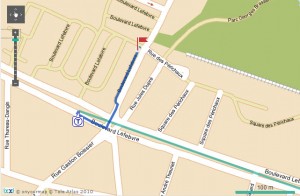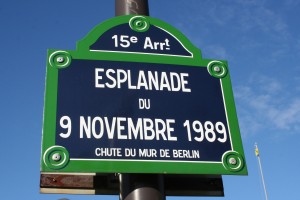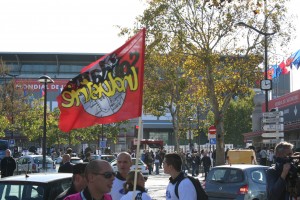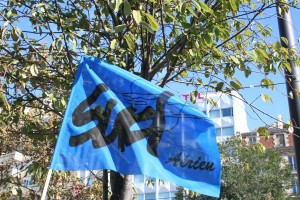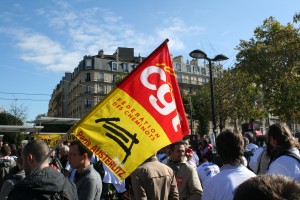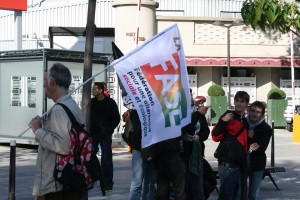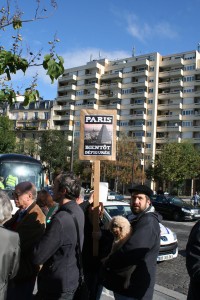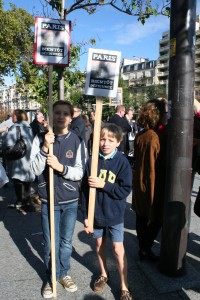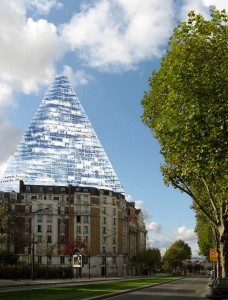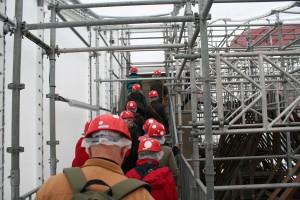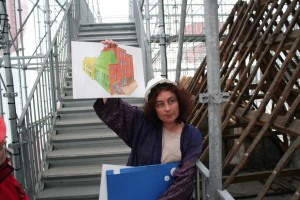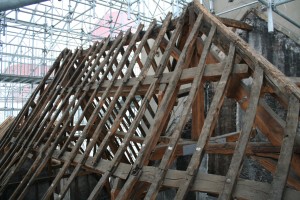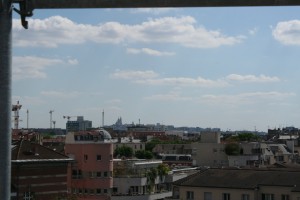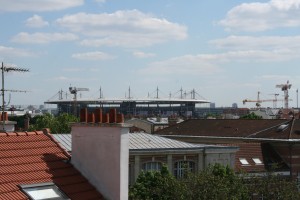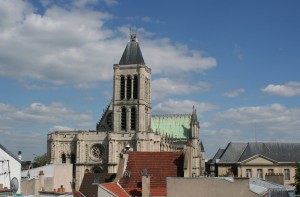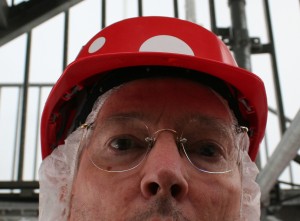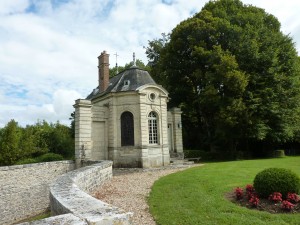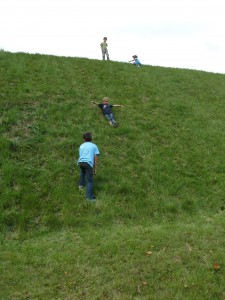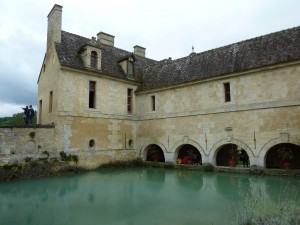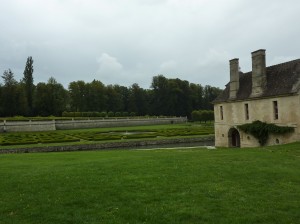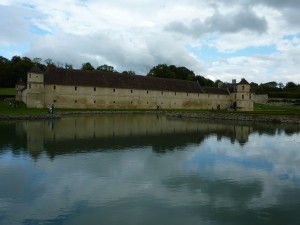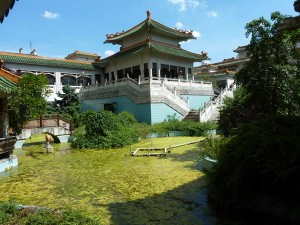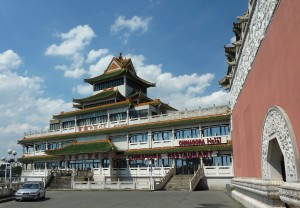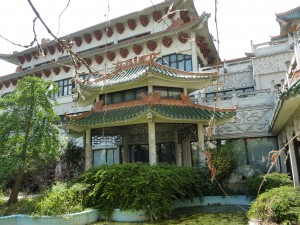Yesterday turned out to be sunny with blue skies. It was a beautiful day for a protest!
I set out in the morning to find S.O.S. Paris, a group that is protesting plans for the construction of a monstrous monolith on the edge of the city. I had read on Leonard Pitt’s Facebook page that the protest would take place at 10:30 a.m. at 15 boulevard Lefebvre in the 15th arrondissement. It was an unlikely address for a demonstration, but I had nothing else to go on.
The map published on the Web site of the RATP (Paris Transport Authority) added to the confusion by directing me down a misnamed side street. That street had nothing to do with the address that I was seeking. I should have suspected that RATP’s directions were wrong when I saw that roughly one-third of the streets on the map were named “boulevard Lefebvre.” What, I wondered, had the cartographer been smoking when this map was drawn up?
After this false start I returned to the boulevard and continued along until I got to the Esplanade du 9 Novembre 1989 located at Porte de Versailles.
There were a lot of groups assembled there that seemed to be preparing for demonstrations. There was a group with a red flag.
There was a group with a blue flag.
The Conféderation Générale du Travail was there with a red and yellow flag.
The Fédération pour une Alternative Sociale et Ecologique was there with a multicolored flag on a white background.
Television crews were there…but where was S.O.S Paris?
There they were! Over near the entrance to the Porte de Versailles exposition hall. (Yesterday was the opening day of the Mondial de l’Automobile, which is being held in the hall.)
Kids were there, too!
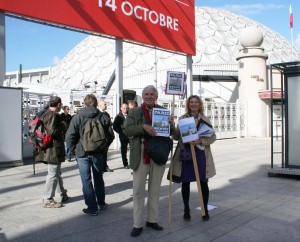
Jan Wyers and Christine Nedelec
at the Spot of the Proposed Building
Photograph by www.DiscoverParis.net
I met Jan Wyers, Secrétaire Général of S.O.S. Paris, and Christine Nedelec, Sécrétaire Général Adjointe. They were standing on the spot where the monolith will be built (unless concerned citizens can stop it).
I met Olivier Rigaud, vice-president of Jeunes Parisiens de Paris. I listened in on his conversation about the group’s strategy for blocking the plans for construction of the monolith. It was at that point that I realized that these guys are serious!
What is your view on this issue? Do you want to see a giant pyramid built on the edge of Paris? Do you care about preserving the city skyline?
Take a look at my video of Mary Campbell Gallager’s call to action and then write a letter, as she suggests, to the mayor of Paris. His address is on the video.
The English-language page for the S.O.S. Paris Web site is sosparis.free.fr/p1_s.htm.
Like our blog? Join us on Facebook!

